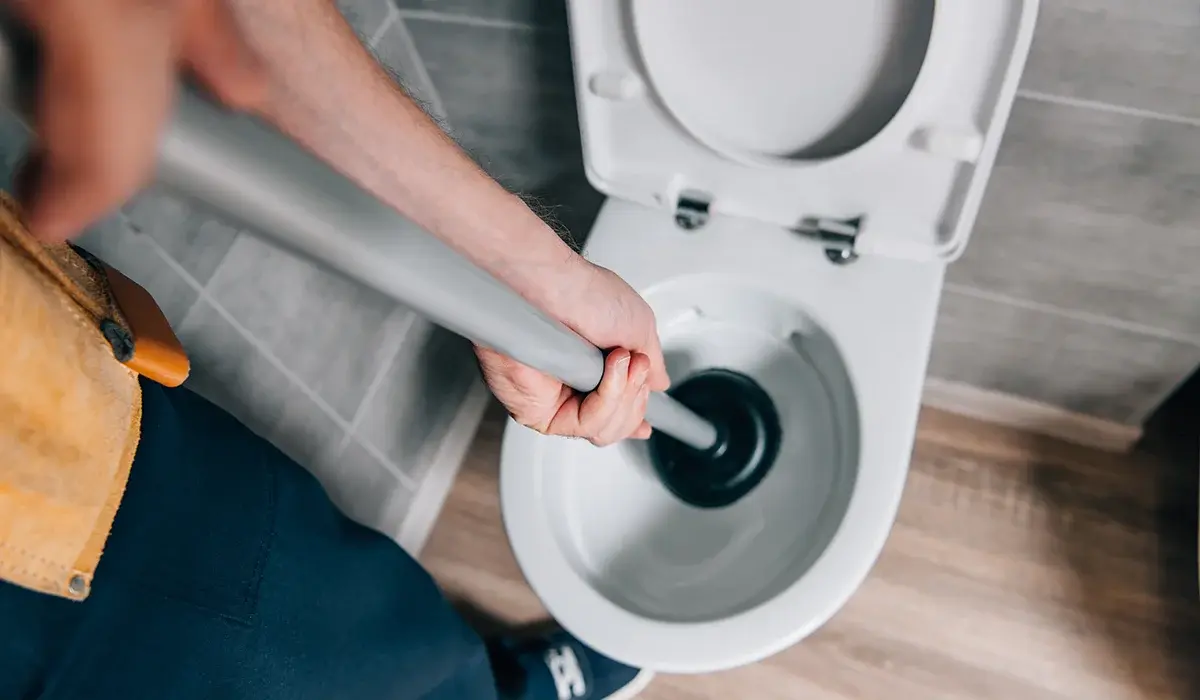Plumbing
Step-by-Step Guide to Snaking a Toilet

Toilet Snaking Guide: Master the Art of Unclogging Your Toilet
Sometimes, a stubborn clog needs more than just a plunger. A toilet snake, or drain auger, provides a practical solution. In this toilet snaking guide, you’ll learn step-by-step how to clear tough clogs without calling a plumber. This method is safer and more effective than chemical solutions.
What Is a Toilet Snake?
A toilet snake is a tool with a flexible cable and crank handle. It targets clogs deeper in the drain line.
The snake’s coiled tip either breaks up or grabs the clog. As you crank, the cable moves further down the pipe.
Most models include a rubber sheath to protect the toilet’s porcelain. They’re ideal for clogs beyond a plunger’s reach.
When To Use a Toilet Snake
You don’t always need to grab a snake first. Evaluate the situation carefully before you do.
Plunger vs. Snake
Start with a plunger for surface-level clogs. It uses pressure to dislodge blockages near the toilet bowl’s opening.
If plunging fails after several tries, then a snake is your best option. It reaches deeper clogs with precision.
Excessive plunging can also damage your toilet’s wax seal. Therefore, switch methods if plunging doesn’t work.
Chemicals vs. Snake
Chemical cleaners seem easy, but they pose serious risks. They can corrode pipes and rarely solve solid clogs.
Instead, use a snake for a safer and eco-friendly option. Mechanical removal reduces harm to plumbing and the environment.
Essential Tools for Snaking a Toilet
To get started, gather the right type of snake and basic safety supplies.
Types of Toilet Snakes
- Manual auger: Best for homeowners; simple and budget-friendly.
- Electric auger: Ideal for tough clogs, used by professionals.
- Closet auger: Designed for toilets, protects bowl with rubber coating.
- Drum auger: Heavier, better for deeper clogs beyond standard reach.
You can find a manual auger for under $30 at most hardware stores.
Other Helpful Supplies
- Rubber gloves
- Towels or newspapers
- A small bucket
- Disinfectant spray
- Plunger (as a backup tool)
Preparing for the Snaking Process
Before you start, create a clean and safe workspace around the toilet.
- Put on gloves to protect your hands.
- Ensure your bathroom has proper ventilation.
- Keep pets and children out of the area.
- Lay towels or papers on the floor around the base.
Have your bucket and tools within easy reach. Position the snake near the toilet for quick access.
Step-by-Step Toilet Snaking Guide
Follow these steps carefully to avoid damaging your plumbing or making a mess.
Step 1: Insert the Snake
Position the snake’s tip at the bowl’s drain. Feed the cable slowly by cranking the handle clockwise.
Apply steady, gentle pressure. Let the cable follow the curve of the drain naturally.
Step 2: Navigate the Drain
Crank and push the cable slowly through bends. When you feel resistance, stop. That’s likely where the clog is.
Use a gentle push-pull motion while continuing to crank. Avoid forcing the snake—it could cause damage.
Step 3: Break Up or Remove the Clog
Use small motions to loosen or grab the clog. Then crank to push it down or pull it back out.
If you feel the clog break up, continue feeding the cable through. If it latches on, prepare to extract it.
Step 4: Remove the Snake
Retract the cable slowly by cranking counterclockwise. Place any debris in the bucket for safe disposal.
Flush the toilet once the cable is fully removed. The water should drain smoothly and quickly now.
Common Problems and Quick Fixes
Even with care, snaking can present challenges. Use these tips to troubleshoot effectively.
If the Clog Won’t Budge
- Reinsert the snake at a new angle.
- Try a longer or powered snake if needed.
- Alternate between plunging and snaking.
- Remove the toilet for serious clogs (if comfortable doing so).
Avoiding Toilet Damage
- Use snakes with rubber-coated tips.
- Don’t force the crank through tough spots.
- Be cautious near bends in the pipe system.
Cleaning After Snaking the Toilet
Good hygiene matters. Always clean your tools and workspace thoroughly after the job is done.
- Rinse the snake in hot, soapy water.
- Disinfect with a bleach solution or commercial spray.
- Let tools dry completely before storing.
- Sanitize the toilet area for good measure.
Preventing Future Toilet Clogs
Prevent clogs before they form. Here’s how to keep your toilet running smoothly every day.
- Don’t flush wipes, paper towels, or hygiene products.
- Use dissolvable toilet paper brands only.
- Install a dispenser that limits the number of sheets used.
- Learn how to unclog without a plunger in emergencies.
When To Call a Professional Plumber
DIY fixes don’t solve every problem. Some issues require expert attention, especially if they recur.
Call a plumber if:
- Snaking fails after multiple attempts.
- You hear gurgling in nearby drains.
- Water backs up in your tub or shower.
- Foul smells come from multiple bathroom drains.
Professional plumbers have advanced tools for deep blockages and sewer line problems.
Is Professional Snaking Worth It?
Yes, especially for serious clogs. A plumber charges $125–$300 on average for a typical job.
Emergency service may cost more. But it’s quicker, safer, and ensures your plumbing remains in good shape.
Explore More Plumbing Tips and Tricks
Snaking your toilet might seem intimidating, but the process is straightforward with the right tools and technique. Follow this Toilet Snaking Guide to save money and avoid stress. Want more practical home maintenance tips?
Explore more news on this website for expert guides, helpful tricks, and plumbing know-how!
